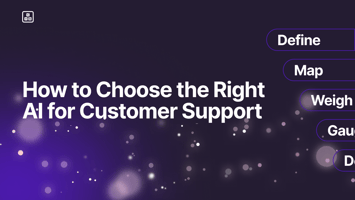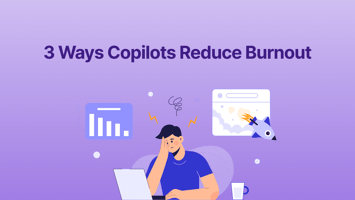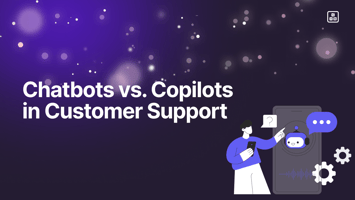The market for AI customer support tools has exploded. From chatbots to copilots to full customer...
Focus on High-Impact AI Use Cases – Not “AI Everywhere” for ROI
Trying to AI-enable everything at once is a recipe for stalled progress. Learn how focusing on a few strategic workflows like customer support triage or invoice processing can deliver measurable wins and build lasting momentum.

AI has become a strategic imperative for enterprise leaders, but more isn’t always better. Many C-suites are tempted to launch dozens of AI pilots across every business unit. Yet according to Boston Consulting Group, only 4% of companies have scaled AI with significant impact. The remaining 96% often get stuck in a cycle of scattered projects, unclear objectives, and disappointing ROI.
The takeaway? Don’t boil the ocean. Focus on 2–3 high-impact use cases first. Strategic focus, not scale, is what delivers results.
Why Start with a Few High-Impact Use Cases?
- Tangible Outcomes Fast
Clear, narrowly scoped AI projects deliver quick wins that prove value to stakeholders. Research from McKinsey shows that well-scoped, data-backed pilots are more likely to succeed. For example, projects that aim to reduce time spent on a task or increase accuracy with specific KPIs in mind are far more effective than vague experimentation. -
Better ROI and Executive Buy-In
AI projects that improve measurable KPIs like time savings, customer satisfaction, or cost reduction gain executive trust faster. When AI proves it can drive business results, it’s easier to expand and secure funding. Studies show that companies who start small, iterate, and scale intentionally often outperform those that roll out AI broadly from day one. -
Resource Focus & Risk Management
Enterprise data scientists, IT teams, and clean datasets are finite resources. Focusing those teams on just a few critical workflows ensures quality execution and risk containment. If one project fails, it's a lesson learned and not a company-wide setback.
Real-World Use Cases with Clear ROI
Customer Support Triage
One of the best places to start is AI for customer support routing and deflection. A fashion retailer implemented an AI chatbot to handle common inquiries, which deflected 43% of tickets and reduced ticket volume by 50%. Even better, customer satisfaction increased by 9%. Another company saw a 30% call deflection rate after deploying an AI assistant for Tier 1 support.
Invoice Processing
Accounts payable teams spend hours manually entering invoice data. AI-driven invoice automation - using OCR and NLP - can cut this time drastically. One enterprise reduced invoice processing costs by 40% and nearly eliminated data errors (99% reduction), all while accelerating approval cycles from days to minutes.
The Bottom Line
AI works best when it starts focused. Trying to AI-enable every process from day one spreads teams too thin and makes wins harder to track. But zeroing in on just 2–3 high-value workflows allows companies to:
-
Build organizational confidence
-
Deliver measurable outcomes
-
Create a scalable model for future use cases
In short: strategic depth beats superficial breadth. Pick the right battles. Prove value. Then scale. It’s the smartest way to turn AI from buzzword to business value.


